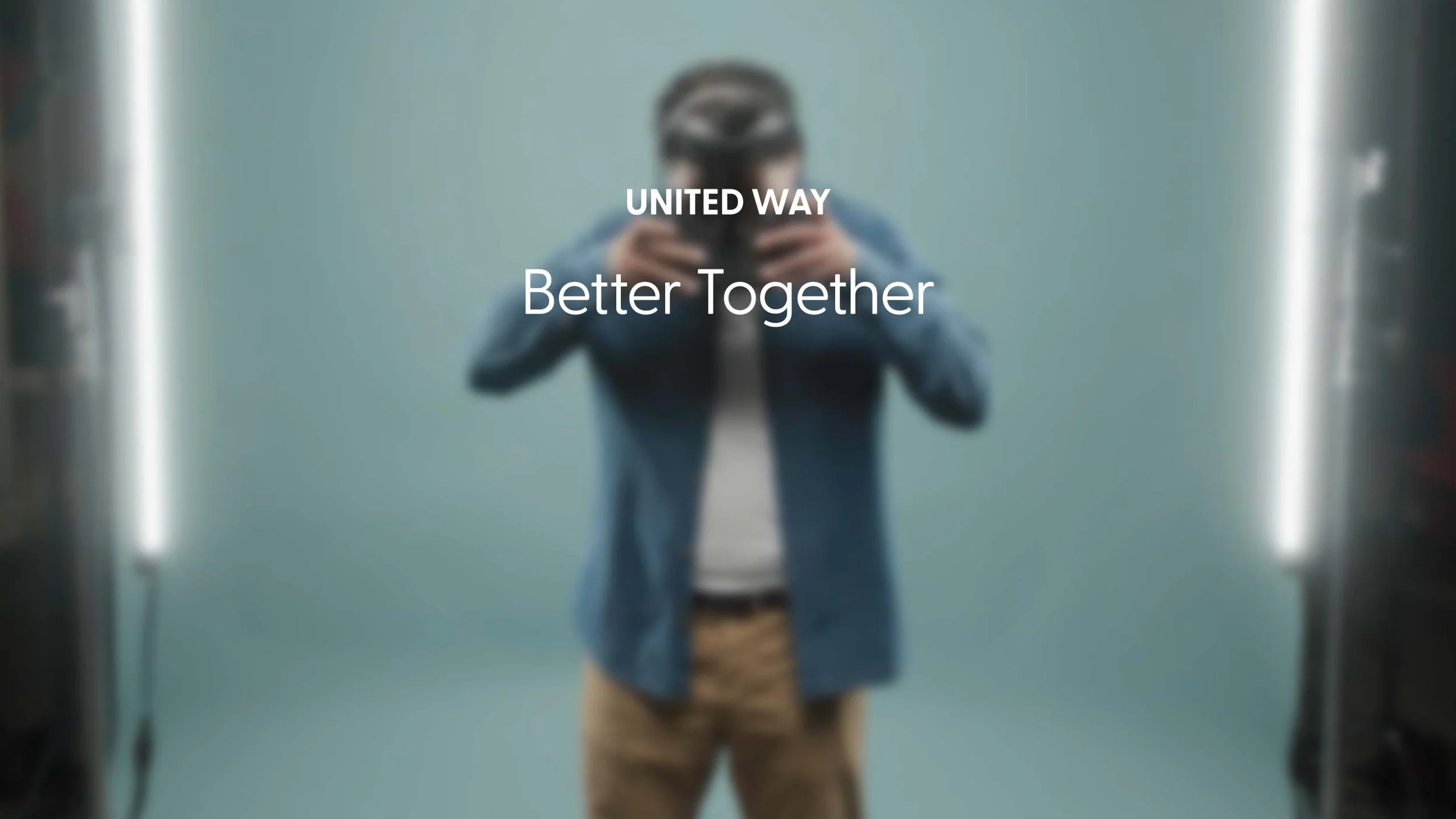United Way
VR for empathy.
Can you generate powerful empathy through virtual reality? As it turns out, the answer is a resounding ‘Yes’! In the words of VR guru and producer Chris Milk from a 2015 TEDtalk: “Virtual reality is the ultimate empathy machine.”
Through our ongoing partnership with United Way of Calgary, we have been exploring new and innovative ways to build empathy and engage people in important issues in our community including Virtual Reality.
One example that motivated us to action was a VR experience entitled “The Source” about a young girl in a village without drinking water who could not go to school because she spent hours every day fetching clean drinking water for her family. Charity: water raised $2.4 million in one night at a black tie gala at the Metropolitan Museum of Art in New York, an 800% increase from the previous year. During a visit to charity:water’s office, one donor (who had previously committed $60,000) watched the VR experience and was so moved that he gave an additional $400,000.

It started as an experiment.
Our journey into virtual reality started from some experimentation based on an internal collaboration need. With new employees joining our team spread across multiple locations, we wanted to explore new ways of working and socializing together.
Rather than relying on Zoom calls and Mural brainstorming, we decided to deploy Oculus Headsets to our employees and meet through an app called Spatial.io. Spatial empowers their users to leverage their beautiful spaces to share eye popping content, build a tight knit community, and drive meaningful sales of their creative works and products.
WHAT WE WANTED TO LEARN:
Does using multiple tools for accessing the VR space change the experience?
How effectively does Spatial audio allow individuals and small groups to have private/breakout conversations in populatedVR environments?
How effective is Spatial as a VR collaboration tool?
Is VR collaboration fun?
What do participants need in order to have a positive experience collaborating in VR?
Here is an analysis of the tool that our team created based on our own experience.
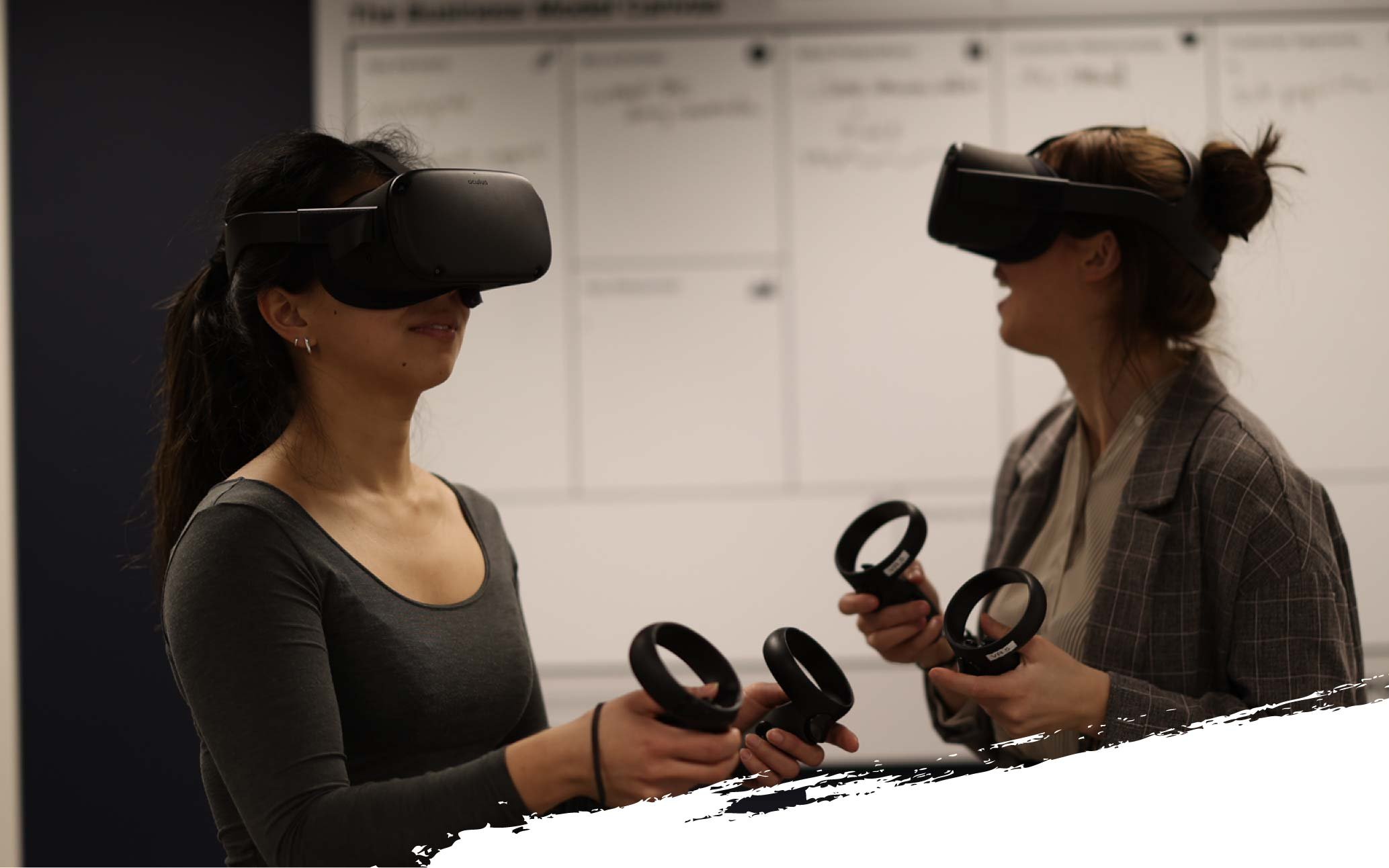
The Big Idea.
After researching the possibilities and raising money through the generosity of a Calgary based donor, we decided to create a Virtual Reality experience intended to increase participant empathy, in particular with regard to childhood poverty.
You may be asking yourself - how does one create a virtual reality simulation about childhood poverty? Exactly the same question we asked ourselves. After consulting with Dr. Rita Yembilah from the Canadian Poverty Institute to understand more deeply the intricacies of the issue we were about to take on, a team was assembled, including some great minds from Unity Technologies.
The pieces were simple enough - storyboarding, scripting, virtual reality design, audio recording, iterate… review… iterate… review… Micro-teams worked independently on their pieces, jamming the digital highway with back-and-forth emails clarifying, asking for review, suggesting new ideas, celebrating small wins, and lamenting small frustrations.
As all the pieces slowly came together, the project began to take shape. Designing turned into testing – each member of the team donning an Oculus each time an updated version was pushed out, until there it was… BOOM! Jack’s Story was born!
Jack’s Story, a virtual reality experience was developed to address social problems. By immersing the audience in Jack’s life and imagination, we explore unemployment, social isolation, mental health issues, and lack of basic needs, including the actions we all can take to help.
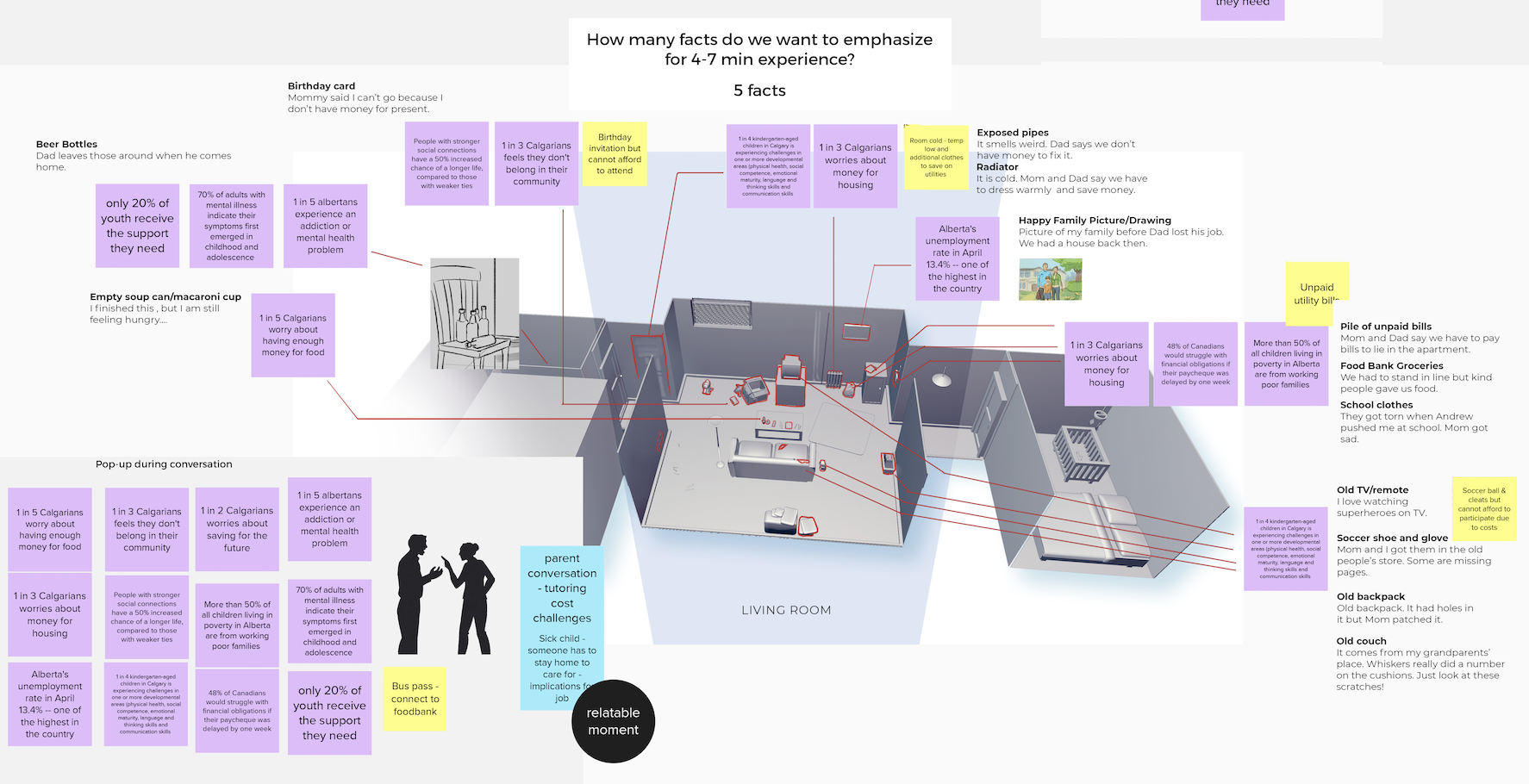
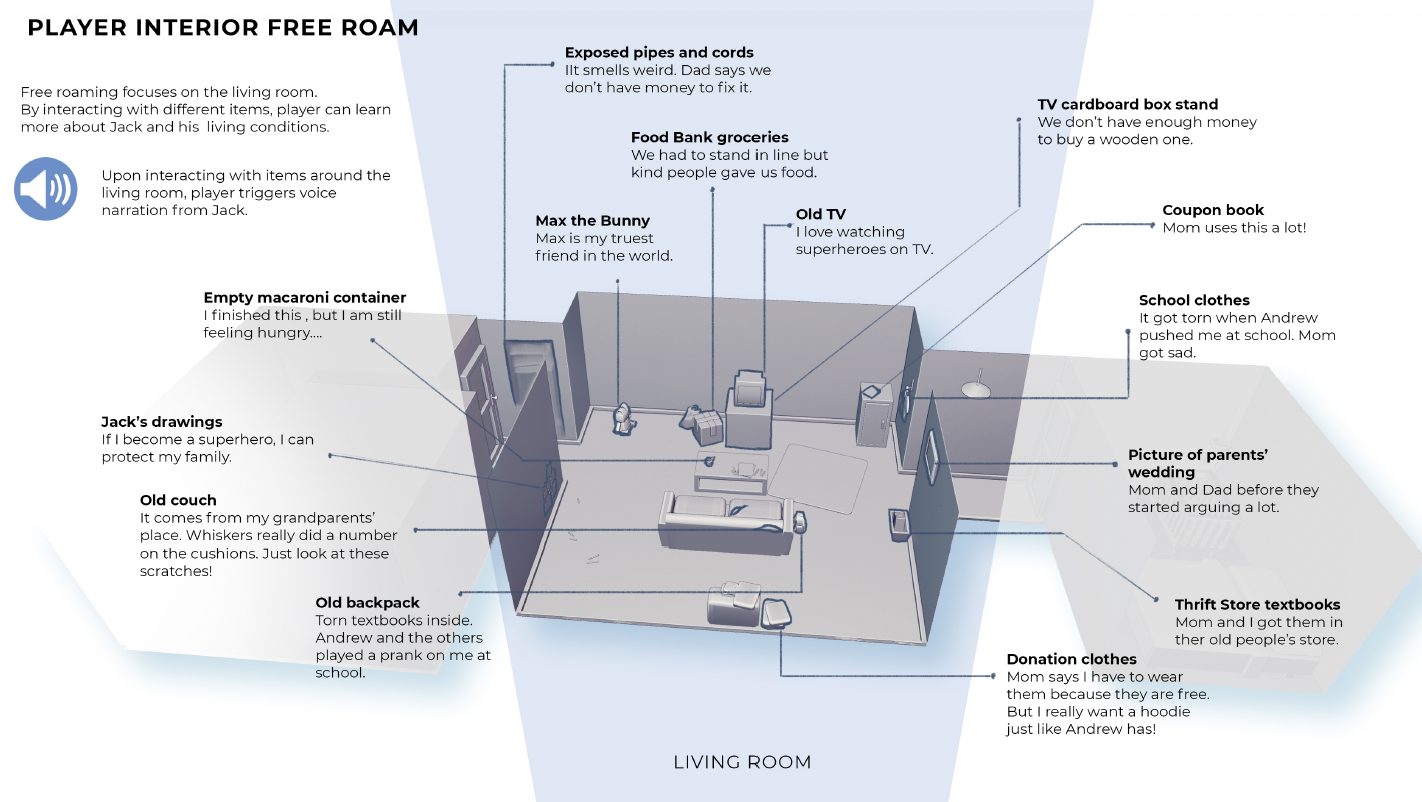
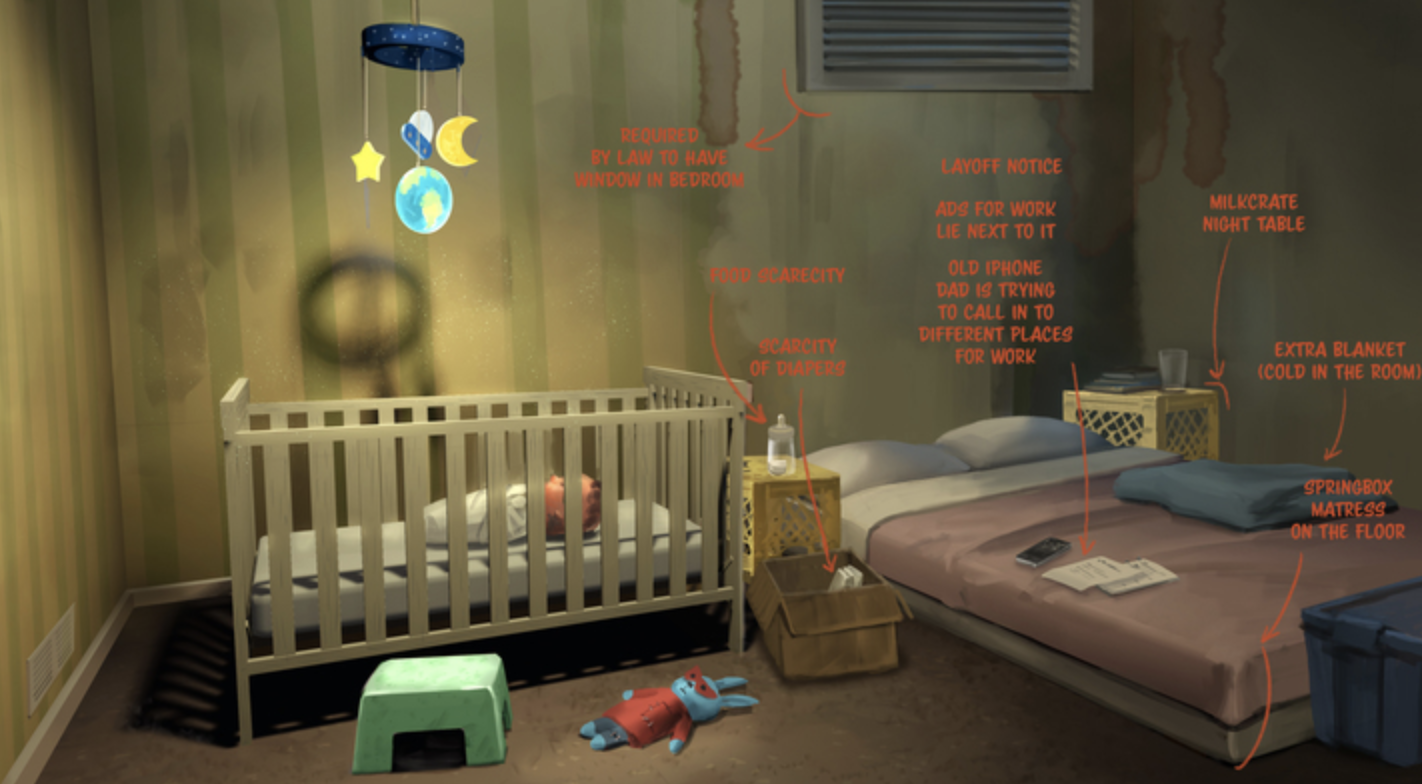
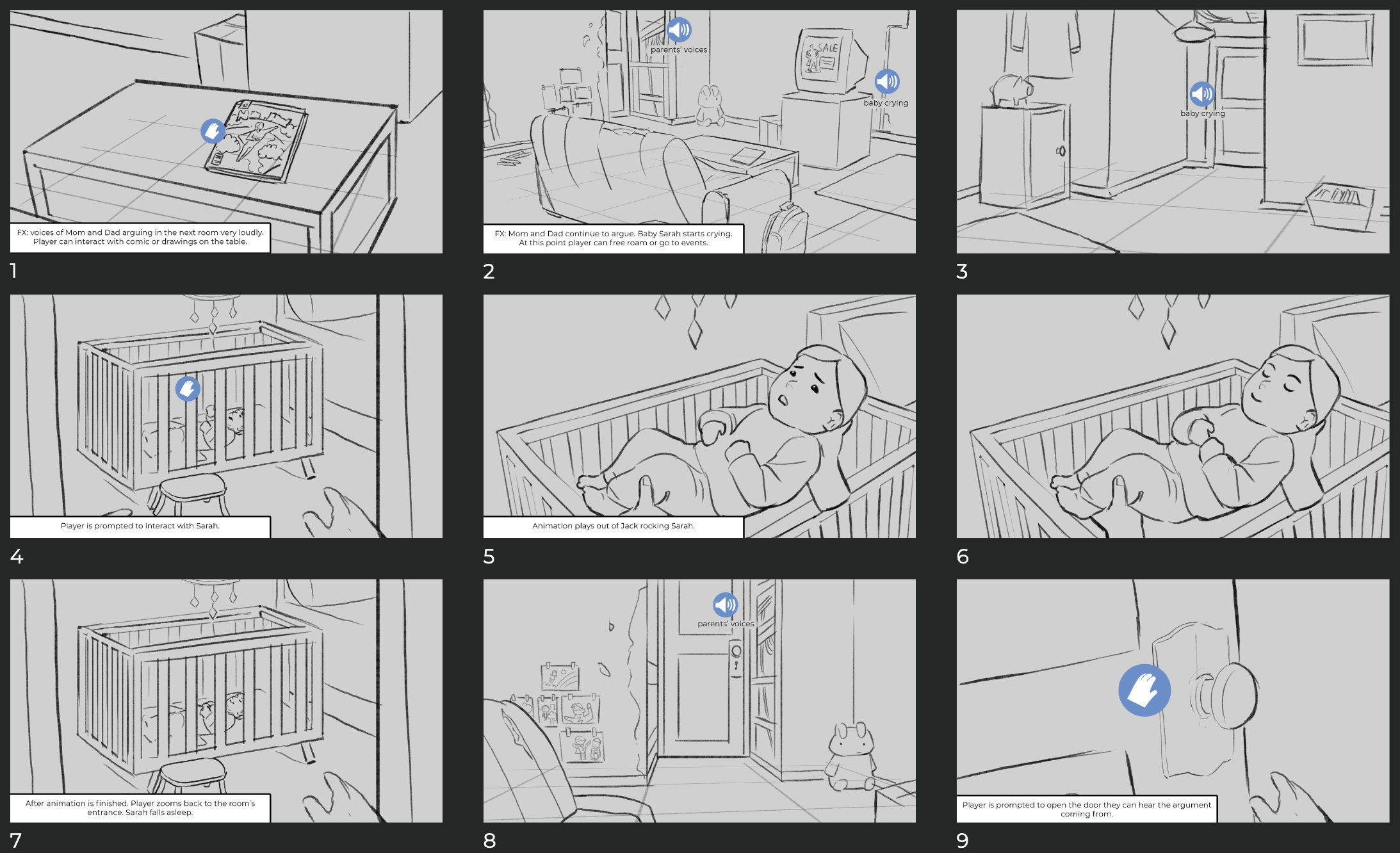
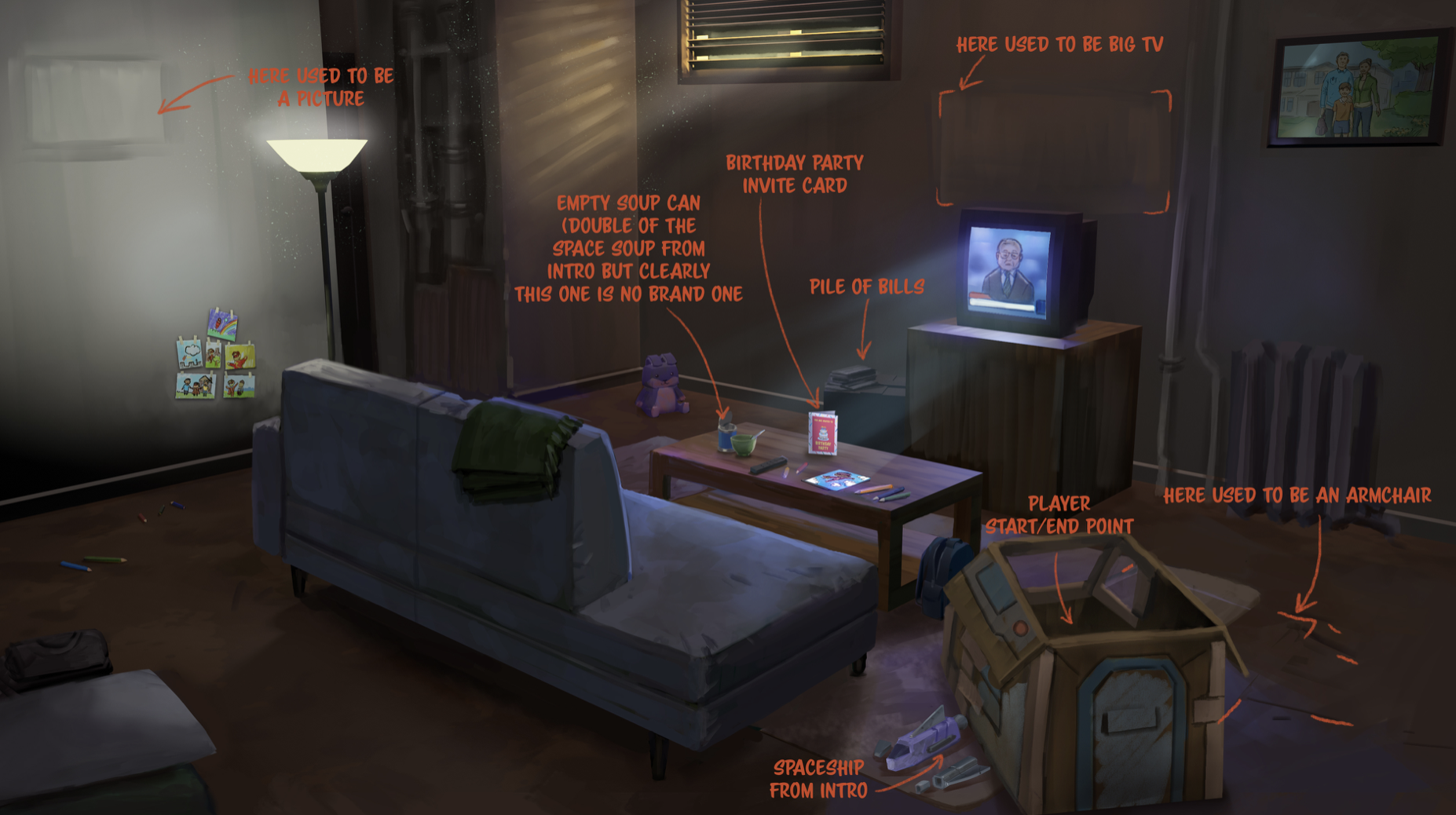
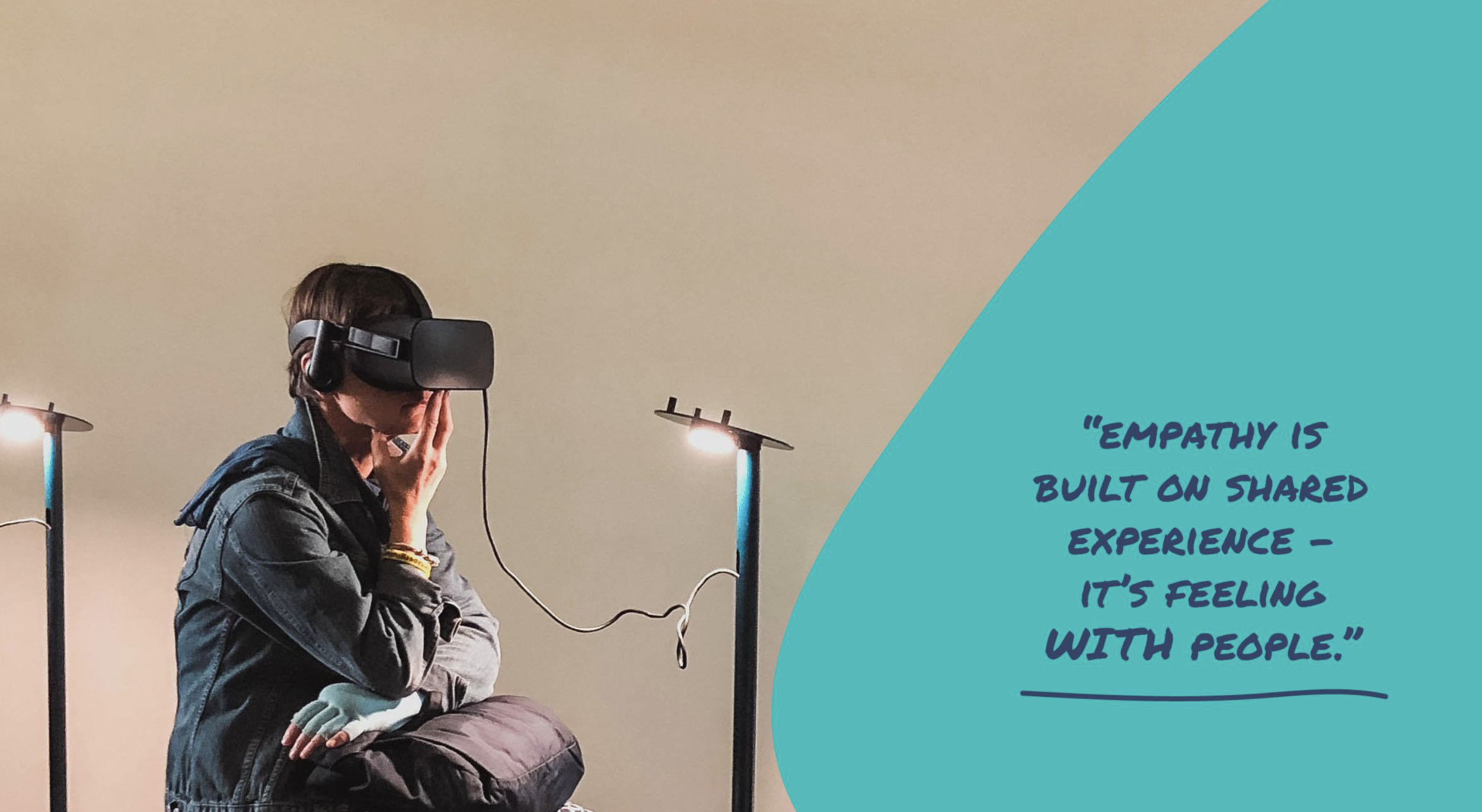
The Experience
Essentially, what we tested with Jack’s Story is if it is possible to use virtual reality to convert sympathy to empathy and deepen the audience understanding and personal connection to the issue. And in doing so, mobilize stronger support toward the amelioration of the issue.
Going Deep
Instead of relying upon the technology, we wanted to put participants into a more receptive state with the intention of deepening the connection to Jack, so facilitators led all participants through a child regression before putting on the headset.
“Visualize yourself as a ten-year-old, standing right in front of you. Bring yourself in, so you are seeing through the eyes of your ten-year-old self. You are this child and this child is you.”
As participants dove deeper into their minds, they were asked to recall two separate moments in their childhood. First, a time and place where they felt safe and happy. Next, a time and place in their childhood where they felt unsafe. In both instances they were asked to imagine what this child’s future could look like.
During the virtual reality experience, participants moved around Jack’s family’s small, one-bedroom basement apartment as a story unfolded around them. Jack lives with his parents and baby sister. His dad has recently lost his job and is unemployed. His mother is currently on maternity leave. They live in a small one-bedroom basement apartment, after having to leave their home. There is no heat, a small amount of light, and few personal belongings. Like most families living in poverty, Jack and his family deal with food scarcity, unemployment, social isolation, mental health, and socio-economic challenges.
After the virtual reality simulation was complete, participants debriefed by sharing their experience and engaged in a curated post-experience information session outlining United Way’s work in childhood poverty and showed how participants can make a significant and measurable impact.
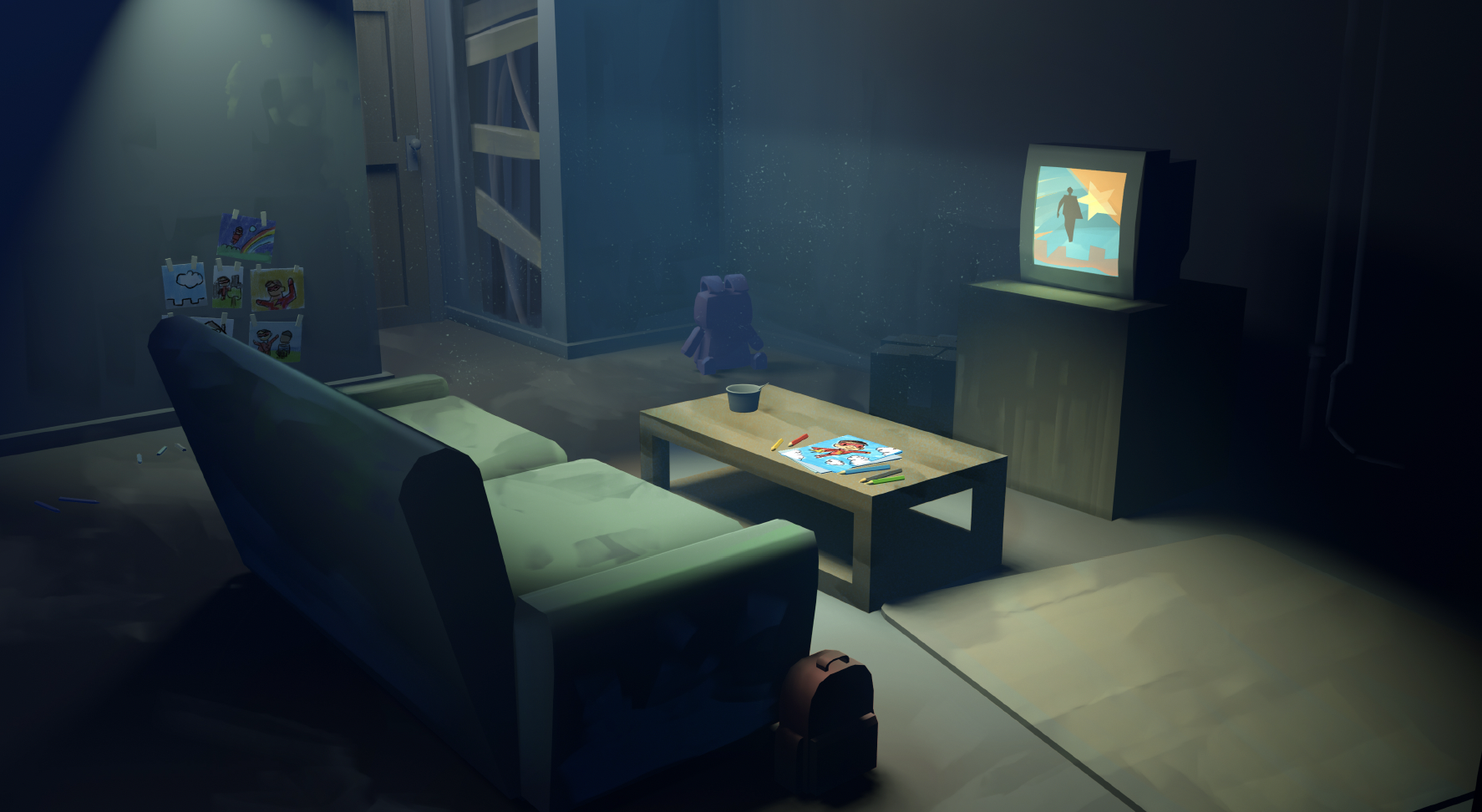
What we learned
United Way of Calgary and Area wanted to collect verifiable data that proved a relatively modest investment in Virtual Reality (VR) to determine if further investment in VR as a storytelling tool is viable for United Way and the entire social services sector.
When we ran individuals through the simulation, the results were exciting. Participants completed an online survey after the experience which showed that the experience was successful in sparking empathetic responses: 79% Agree - Strongly Agree that they can understand what Jack is going through, and 64% Agree - Strongly Agree that they can feel Jack's emotions.
“…I was fully immersed. I remember feeling upset and sad when I knocked over the soup can and how he wouldn't have anything to eat.”
“It absolutely hits the objective of generating empathy…”
We are seeing a push toward using these technologies in a socially disruptive way. Unity Technologies, for example, has created an initiative called Unity for Humanity, which uses its platform to celebrate and support the journey of these creators. They offer funding, mentorship, and technical support for social impact projects.
It is heartening to know, that amongst the chaos of a complex world in the grip of exponential technological growth, there is an emerging common language and drive to harness the power of these soon to be omnipresent technologies toward the good of humankind.
